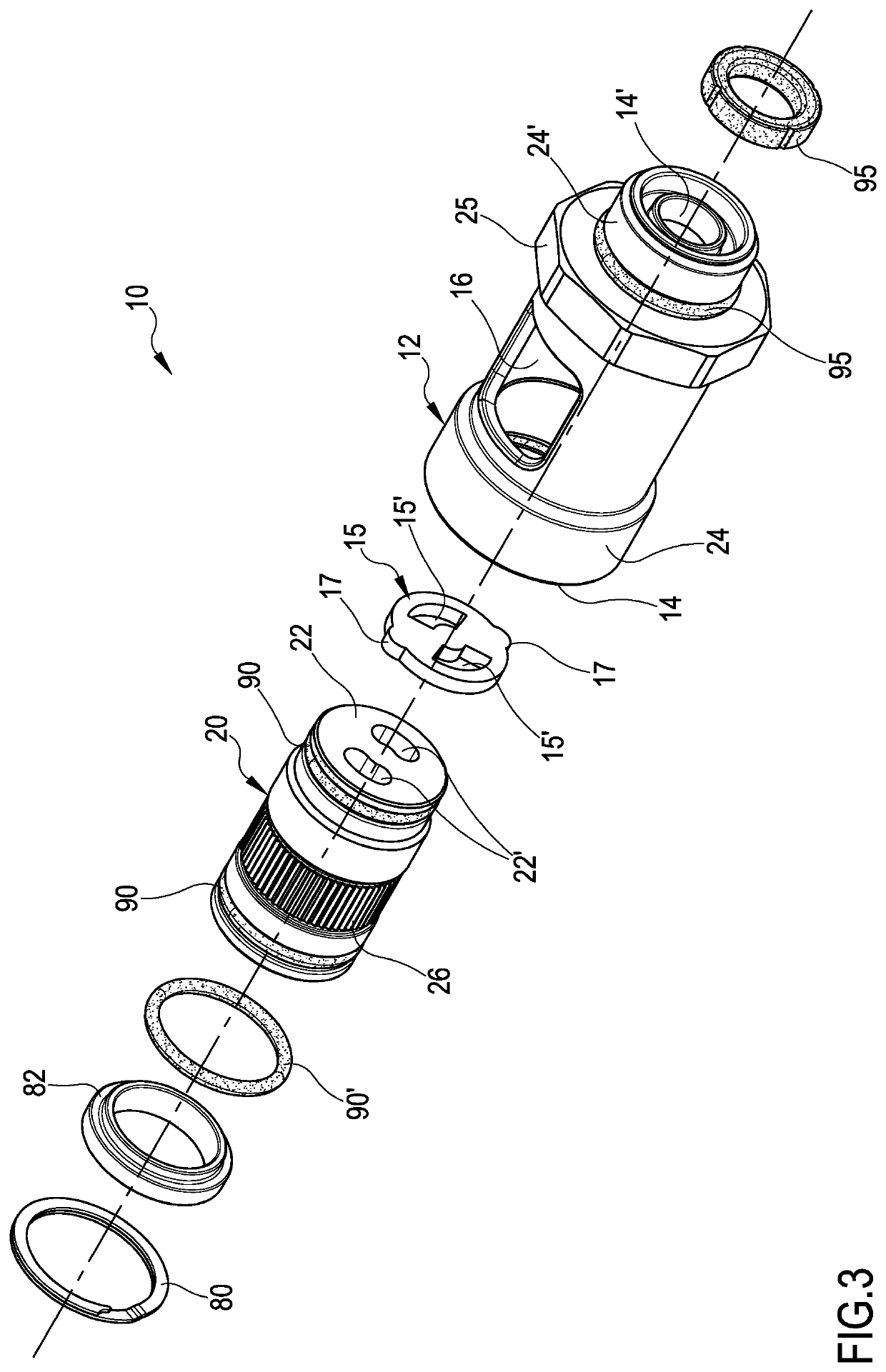Valve for hydraulic control and balancing of fluid flow rate
a hydraulic control and fluid flow rate technology, applied in the field of valves for hydraulic control and fluid flow rate balancing, can solve the problems of further cramped or unavailable rooms, difficulty for operators to have enough rooms, and disadvantages of the mentioned control-balancing valves, etc., to achieve convenient balancing, easy balancing, adjustable and maneuverable
- Summary
- Abstract
- Description
- Claims
- Application Information
AI Technical Summary
Benefits of technology
Problems solved by technology
Method used
Image
Examples
second embodiment
[0045]Moreover, it is made reference to Figures from 4 to 6 and from 11 to 14, which show the valve for hydraulic control and balancing of fluid flow rate object of the present invention, generally indicated by 10′ and both configured to statically control or pre-regulate and dynamically balance a fluid flow rate. Said valves 10, 10′ comprise:
[0046]a body 12 generally having a substantially tubular cylindrical shape provided with an inlet opening 14, outlet opening 14′ disposed at the ends of said body 12 and having at least one actuating opening 16 radially formed on the body 12 itself;
[0047]a hollow rotating shutter 20 rotatively housed inside said body 12, with respect to a rotation axis 11, said rotating shutter 20 being configured to be crossed by a fluid and to rotatively change the passage cross-section of a fluid inside the body 12 itself of the valve 10, 10′.
[0048]Referring in particular to FIGS. 9 and 10 and 13 and 14, the valve 10, 10′ comprises the novel characteristics ...
first embodiment
[0058]Referring to FIGS. 3, 9, and 10, in the first embodiment, the valve 10 comprises a spacer 82 housed in said body 12 having substantially an annular shape, said spacer 82 being configured to close the opening 14 in order to prevent the inner elements to be extracted from the body 12 of the valve 10.
[0059]Valve 10, 10′ can also comprise conventional first fluid sealing elements 90 disposed between the body 12 and rotating shutter 20 and second fluid sealing elements 90′ disposed between said rotating shutter 20 and said spacer 82. Said first and second sealing elements 90, 90′ can be further fit and housed in mated seats or recesses formed on the same rotating shutter 20 and spacer 82 or, alternatively, formed on the body 12 inner surface.
[0060]Valve 10, 10′ can comprise also conventional third fluid sealing elements 95 disposed between the body 12 and other connecting elements, hydraulic devices or valves, not shown, said third fluid sealing elements 95 being generally fit and ...
PUM
 Login to View More
Login to View More Abstract
Description
Claims
Application Information
 Login to View More
Login to View More - R&D
- Intellectual Property
- Life Sciences
- Materials
- Tech Scout
- Unparalleled Data Quality
- Higher Quality Content
- 60% Fewer Hallucinations
Browse by: Latest US Patents, China's latest patents, Technical Efficacy Thesaurus, Application Domain, Technology Topic, Popular Technical Reports.
© 2025 PatSnap. All rights reserved.Legal|Privacy policy|Modern Slavery Act Transparency Statement|Sitemap|About US| Contact US: help@patsnap.com



